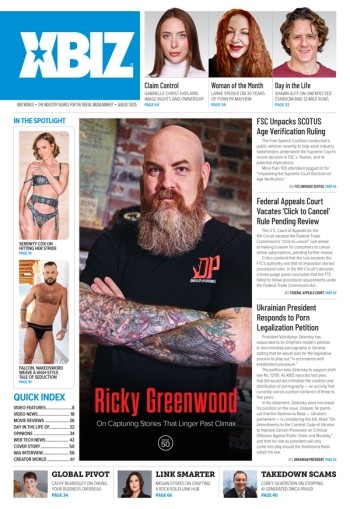From the lockdown boom to the economic pressures of a post-pandemic world, we have seen shifting technologies, evolving consumer expectations and a hunger for authenticity shape pleasure product marketing and public relations. Now, as we begin a new year, it’s a perfect time to reflect on what’s in, what’s out and what’s next for brands trying to navigate this ever-changing terrain and gain exposure in 2025.
The Rise of Substack
The tools we use, the platforms we engage with and the strategies we deploy must evolve in step with the world around us.
In the age of democratized media, Substack has emerged as a platform where journalists, writers and influencers can connect directly with their audiences. Unlike traditional news platforms of the past, these spaces foster a personal touch that readers crave. This shift requires anyone focused on marketing to meet journalists where they are, engage with their work on new platforms and nurture relationships in these burgeoning digital spaces.
Influencer Marketing: Pay to Play
The era of gifted campaigns has ended. Influencers, once content to exchange product mentions for free swag, now expect compensation that matches the value they bring to brands. This evolution demands a more thoughtful, multifaceted approach to influencer partnerships, where creators are treated as collaborators rather than an afterthought.
Tell Me a Story
As platforms like YouTube and Instagram Reels emphasize longer, more engaging content, brands need to rethink their strategy. Today’s audience is savvier than ever, tuning out blatant ads in favor of stories that resonate. In this landscape, long-form content offers brands a way to embed their message within a narrative that consumers actually seek.
AI and Nostalgia: The Dual Forces Shaping Social Media
AI is no longer a distant prospect — it’s here, and it’s reshaping how brands operate. From content creation to enhanced search functionality, AI is becoming integral to marketing. Even platforms like Instagram are preparing for this shift with new tools enabling users to label AI-generated content. As the line between human and machine blurs, transparency will become critical for maintaining trust.
On the flip side, nostalgia is proving a counterbalance to this technological wave. The resurgence of Y2K aesthetics, flip phones and rhinestones taps into a collective yearning for simpler times. For brands, authenticity is the key to leveraging this trend and using nostalgia as a bridge to connect with audiences rather than a hollow marketing ploy.
Sexual Wellness: Breaking New Ground
The sexual wellness industry is undergoing a quiet revolution. For years, products for vulva owners dominated the market, but 2025 promises to continue the rise in innovative designs tailored for penises. This shift signals a broader cultural acceptance of male pleasure as a vital part of wellness. Retailers and brands like Sextoys.co.uk and Bed Nerdz are leading the charge in this area, as are products like The One Rotating Stroker. In a world where stars like Katy Perry collaborate with sexual wellness brands to promote their new music releases, it’s only a matter of time before male-identifying celebrities join the conversation.
Why These Trends Matter
In the fast-evolving world of public relations, where news cycles are measured in seconds and social media algorithms shift on a dime, staying ahead of trends isn’t just a competitive advantage; it’s essential. Trends shape how stories are told, whom they resonate with and how effectively they cut through the noise.
For marketing professionals, understanding and leveraging these trends can mean the difference between orchestrating a campaign that sparks conversation or one that falls flat. Imagine pitching a campaign rooted in outdated stereotypes or ignoring a significant cultural movement that directly affects your target audience. The PR fallout can be swift, as today’s hyper-aware consumers won’t hesitate to call out missteps online.
That’s why the watchword for 2025 is “adaptation.” The tools we use, the platforms we engage with and the strategies we deploy must evolve in step with the world around us. Whether it’s embracing new platforms or collaborating with influencers, the brands that succeed will be those willing to evolve while staying true to their values. That’s how we build meaningful connections in a world that’s always looking ahead.
Scarlett Ward is the affiliate and influencer manager at Little Leaf Agency, a PR and communications agency dedicated to sexual wellness.








